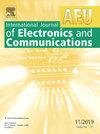A general design methodology for Dual-Resonant topology with inherent constant current and constant voltage outputs under varying mutual inductance
IF 3
3区 计算机科学
Q2 ENGINEERING, ELECTRICAL & ELECTRONIC
Aeu-International Journal of Electronics and Communications
Pub Date : 2025-03-09
DOI:10.1016/j.aeue.2025.155761
引用次数: 0
Abstract
To accommodate the battery charging process in wireless power transfer (WPT) systems, dual-frequency topologies capable of supporting constant current (CC) and constant voltage (CV) output modes have been extensively studied. However, most existing topologies struggle to maintain two output modes and zero phase angle (ZPA) input under varying mutual inductance (MI). To overcome this limitation, this paper proposes a general design methodology for dual-resonant topologies with inherent CC and CV outputs, ensuring that two output modes and ZPA input are maintained across different MI values. The proposed methodology begins by segmenting the topology into three parts, effectively decoupling the compensation parameters from MI, with the mode conversion and resonance of each segment designed independently. The design process first establishes the two output modes, followed by the ZPA input design. To achieve ZPA input, additional parameter constraints and topology compensation are introduced. Moreover, principles for identifying feasible compensation positions and corresponding parameter calculation methods are provided, enabling systematic and efficient topology design. Finally, based on the proposed methodology, an LCCL-LCLC compensated topology is derived. Experimental validation confirms the effectiveness and practical applicability of the proposed design approach, demonstrating its potential for enhancing the performance and reliability of WPT systems.
在可变互感条件下,具有固有恒流和恒压输出的双谐振拓扑的一般设计方法
为了适应无线电力传输(WPT)系统中的电池充电过程,对能够支持恒流(CC)和恒压(CV)输出模式的双频拓扑结构进行了广泛的研究。然而,大多数现有的拓扑结构在变化互感(MI)下难以维持两个输出模式和零相角(ZPA)输入。为了克服这一限制,本文提出了一种具有固有CC和CV输出的双谐振拓扑的通用设计方法,以确保在不同的MI值上保持两种输出模式和ZPA输入。该方法首先将拓扑分割为三部分,有效地将补偿参数与MI解耦,并独立设计每个部分的模式转换和谐振。设计过程首先建立两种输出模式,然后进行ZPA输入设计。为了实现ZPA输入,引入了额外的参数约束和拓扑补偿。给出了确定可行补偿位置的原则和相应的参数计算方法,实现了系统高效的拓扑设计。最后,在此基础上推导出lclc - lclc补偿拓扑结构。实验验证证实了所提出的设计方法的有效性和实际适用性,展示了其提高WPT系统性能和可靠性的潜力。
本文章由计算机程序翻译,如有差异,请以英文原文为准。
求助全文
约1分钟内获得全文
求助全文
来源期刊
CiteScore
6.90
自引率
18.80%
发文量
292
审稿时长
4.9 months
期刊介绍:
AEÜ is an international scientific journal which publishes both original works and invited tutorials. The journal''s scope covers all aspects of theory and design of circuits, systems and devices for electronics, signal processing, and communication, including:
signal and system theory, digital signal processing
network theory and circuit design
information theory, communication theory and techniques, modulation, source and channel coding
switching theory and techniques, communication protocols
optical communications
microwave theory and techniques, radar, sonar
antennas, wave propagation
AEÜ publishes full papers and letters with very short turn around time but a high standard review process. Review cycles are typically finished within twelve weeks by application of modern electronic communication facilities.

 求助内容:
求助内容: 应助结果提醒方式:
应助结果提醒方式:


